Immunoprotective Effects of Two Histone H2A Variants in the Grass Carp Against Flavobacterium columnare Infection
- PMID: 35898515
- PMCID: PMC9310644
- DOI: 10.3389/fimmu.2022.939464
Immunoprotective Effects of Two Histone H2A Variants in the Grass Carp Against Flavobacterium columnare Infection
Abstract
In teleost fish, the nucleotide polymorphisms of histone H2A significantly affect the resistance or susceptibility of zebrafish to Edwardsiella piscicida infection. Whether histone H2A variants can enhance the resistance of grass carp to Flavobacterium columnare infection remains unclear. Here, the effects of 7 previously obtained variants (gcH2A-1~gcH2A-7) and 5 novel histone H2A variants (gcH2A-11, gcH2A-13~gcH2A-16) in response to F. columnare infection were investigated. It was found that these histone H2A variants could be divided into type I and II. Among them, 5 histone H2A variants had no any effects on the F. columnare infection, however 7 histone H2A variants had antibacterial activity against F. columnare infection. The gcH2A-4 and gcH2A-11, whose antibacterial activity was the strongest in type I and II histone H2A variants respectively, were picked out for yeast expression. Transcriptome data for the samples from the intestines of grass carp immunized with the engineered Saccharomyces cerevisiae expressing PYD1, gcH2A-4 or gcH2A-11 revealed that 5 and 12 immune-related signaling pathways were significantly enriched by gcH2A-4 or gcH2A-11, respectively. For the engineered S. cerevisiae expressing gcH2A-4, NOD-like receptor and Toll-like receptor signaling pathways were enriched for up-regulated DEGs. Besides NOD-like receptor and Toll-like receptor signaling pathways, the engineered S. cerevisiae expressing gcH2A-11 also activated Cytosolic DNA-sensing pathway, RIG-I-like receptor signaling pathway and C-type lectin receptor signaling pathway. Furthermore, grass carp were immunized with the engineered S. cerevisiae expressing PYD1, gcH2A-4 or gcH2A-11 for 1 month and challenged with F. columnare. These grass carp immunized with gcH2A-4 or gcH2A-11 showed lower mortality and fewer numbers of F. columnare than did the control group. All these results suggest that gcH2A-4 and gcH2A-11 play important roles in evoking the innate immune responses and enhancing disease resistance of grass carp against F. columnare infection.
Keywords: Flavobacterium columnare; Saccharomyces cerevisiae; grass carp; histone H2A variants; immunoprotective effect.
Copyright © 2022 Yang, Zheng, Fang, Wu, Zhang and Chang.
Conflict of interest statement
The authors declare that the research was conducted in the absence of any commercial or financial relationships that could be construed as a potential conflict of interest.
Figures

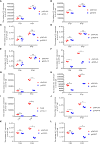

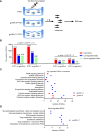
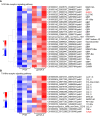

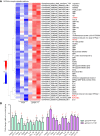
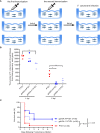
Similar articles
-
Effects and Molecular Regulation Mechanisms of Salinity Stress on the Health and Disease Resistance of Grass Carp.Front Immunol. 2022 Jun 6;13:917497. doi: 10.3389/fimmu.2022.917497. eCollection 2022. Front Immunol. 2022. PMID: 35734166 Free PMC article.
-
Dietary vitamin C deficiency depressed the gill physical barriers and immune barriers referring to Nrf2, apoptosis, MLCK, NF-κB and TOR signaling in grass carp (Ctenopharyngodon idella) under infection of Flavobacterium columnare.Fish Shellfish Immunol. 2016 Nov;58:177-192. doi: 10.1016/j.fsi.2016.09.029. Epub 2016 Sep 15. Fish Shellfish Immunol. 2016. PMID: 27640333
-
Transcriptome analysis of head kidney and liver in grass carp (Ctenopharyngodon idella) symptomatically or asymptomatically infected with Flavobacterium columnare.Fish Shellfish Immunol. 2025 Jun;161:110293. doi: 10.1016/j.fsi.2025.110293. Epub 2025 Mar 22. Fish Shellfish Immunol. 2025. PMID: 40122189
-
Transcriptome analysis of immune-related gene expression in Yellow River carp (Cyprinus carpio var.) after challenge with Flavobacterium columnare.Microb Pathog. 2021 Nov;160:105148. doi: 10.1016/j.micpath.2021.105148. Epub 2021 Aug 23. Microb Pathog. 2021. PMID: 34438023
-
Generation of biotechnology-derived Flavobacterium columnare ghosts by PhiX174 gene E-mediated inactivation and the potential as vaccine candidates against infection in grass carp.J Biomed Biotechnol. 2012;2012:760730. doi: 10.1155/2012/760730. Epub 2012 Jun 10. J Biomed Biotechnol. 2012. PMID: 22719209 Free PMC article.
Cited by
-
Genome-Wide Identification of Trachinotus ovatus Antimicrobial Peptides and Their Immune Response against Two Pathogen Challenges.Mar Drugs. 2023 Sep 25;21(10):505. doi: 10.3390/md21100505. Mar Drugs. 2023. PMID: 37888440 Free PMC article.
References
Publication types
MeSH terms
Substances
Supplementary concepts
LinkOut - more resources
Full Text Sources
Molecular Biology Databases
Research Materials

